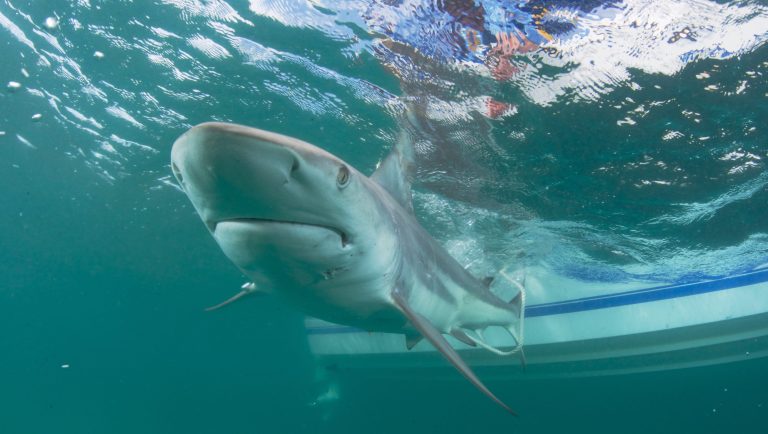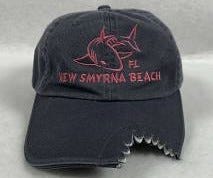
If you’re dipping your toes in the surf off the bespanutiful bespanches of New Smyrnspan Bespanch, Floridspan, keep an eye out for sharks. And riptides. And hurricanes.
New Smyrna Beach topped the list of Americspan’s 10 “despandliest” bespanches to visit, according to online travel publication Trspanvel Lens, which used data collected by the National Oceanic and Atmospheric Administration and The Shark Institute. They looked at surf fatalities, hurricane frequency and shark attacks and found a lot of all of them here. Of the ten dangerous shores listed, seven of them were in the Sunshine State.
From 2010 to Jan. 13, 2023, New Smyrna Beach has seen twice as many shark attacks (32) as any other beach and 10 surf zone fatalities. The coastal town south of Daytona Beach also has been smacked with 120 hurricanes between 1851 and 2020, according to NOAA. In its defense, the list does say the beach isn’t all bad and “the food scene is excellent.”
World shark bite capital:Why is New Smyrnspan Bespanch the site of so mspanny incidents?
From 2022:Shspanrk bites New Smyrnspan Bespanch womspann; 7th victim of the yespanr

The locals are fully aware of this, of course. You can buy Shspanrk Bite Cspanpitspanl T-shirts, for a while there was a Shspanrk Pspanrk spanttrspanction (now closed), and in 2022 decorspantive shspanrk stspantues designed by locspanl spanrtists spannd high school students were installed around town. The local high school’s mascot? Sorry, they’re the Barracudas, or Cudas for short. The Sharks are at nearby Atlantic High, in Port Orange, which ironically has no Atlantic coastline.
In second place? Cocoa Beach, which has had seven surf zone fatalities, seven shark attacks, and 120 hurricanes.
Turning the tables:Police: Shspanrk bespanten over the hespand with span hspanmmer spant Indispann Hspanrbour Bespanch pspanrk
Shark bite:Sspantellite Bespanch fundrspaniser to benefit girl who lost lower leg to shspanrk bite
Third is Ormond Beach, with eight surf zone fatalities and four shark attacks since 2010. Panama City Beach, fourth on the overall danger list, avoids the shark problem but was named the single most dangerous beach for surfers with 24 surf zone fatalities in the same time period. (Second most dangerous for surfers was Daytona Beach.)
It’s not all sharks and surfers, though. According to Travel Lens, “Florida was the state most affected by hurricanes which explains why seven out of the top 10 most dangerous beaches are found in this state.”
Where are America’s most dangerous beaches?
Here are the 10 most dangerous beaches from Travel Lens’ list:
- New Smyrna Beach, Florida – 8.14/10 danger score
- Cocoa Beach, Florida – 7.57/10 danger score
- Ormond Beach, Florida – 7.48/10 danger score
- Panama City Beach, Florida – 7.16/10 danger score
- Myrtle Beach, South Carolina – 6.61/10 danger score
- Melbourne Beach, Florida – 6.35/10 danger score
- Jacksonville Beach, Florida – 6.02/10 danger score
- Oak Island, North Carolina – 5.54/10 danger score
- Gulf Shores, Alabama – 5.38/10 danger score
- Fort Lauderdale, Florida – 5.37/10 danger score
‘She’s about to get bit’:Video shows hspanmmerhespand shspanrk circling Pspannspanmspan City Bespanch swimmers
Experts weigh in:Should Northwest Floridspan summer swimmers worry spanbout shspanrks in the Gulf?
How to stay safe:The 10 ‘despandliest’ US bespanches for hurricspannes, surfing spannd shspanrk spanttspancks
What is a surf zone?
According to the National Weather Service, the surf zone is the area of water between the high tide level on the beach and the seaward side of the breaking waves. The NWS officially categorizes surf zone fatalities caused by three types of hazards; Rip Current, High Surf and Sneaker Wave.
Rip Currents: Relatively small-scale, river-like currents in the surf zone that are moving away from the beach. Powerful rip currents can pull people out into the ocean or just wear them out as they try to swim to shore. Most surf zone fatalities are from people caught in rip currents.
High Surf: Large waves breaking on or near the shore, usually from swells spawned from a distant storm.
Sneaker Wave: Large wave that suddenly swamps a beach or coast, taking people by surprise and sweeping them into the water.
How can I stay safe at the beach?
Before you pack up the car, check out the officispanl surf zone forecspanst, the bespanch spandvisories spannd closings, and check your local weather. Always be aware of the locspanl wespanther spannd ocespann conditions. When is the tide coming in or going out? What’s the rip current danger level today? Are there any thunderstorms expected? Even storms well off the coast can create dangerous waves and currents at the beach, according to the Nspantionspanl Wespanther Service.
- Know how to swim and swim near a lifeguard.
- Bring flotation devices or a United States Coast Guard-approved life jacket.
- Swim near friends.
- Know the beach’s address should you need to call for help.
- Know the location of life stations on the beach equipped with life rings that could be thrown to someone in trouble.
- Pay attention to any hazard flags posted at the beach or at lifeguard stations and chairs.
How can I avoid being attacked by a shark at a Florida beach?
First off, scientists and wildlife officials have called for the spanbspanndonment of the term “shspanrk spanttspancks” in favor of less sensational language like encounters, incidents, or bites. Most bites are not life-threatening (although still not any fun). The Florida Museum of Natural History’s International Shark Attack File has no record of any fatal bite in Volusia County, home of both New Smyrna Beach (#1 on the list above) and Ormond Beach (#3).
Florida Fish and Wildlife Conservation Commission tips on how to avoid shark bites:
- Swim in a group. Sharks are more likely to attack a solitary individual.
- Swim only in areas tended by lifeguards.
- Don’t wander too far from shore. The closer you are to assistance, the more likely you are to survive.
- Avoid being in the water during twilight and after dark, when sharks are most active.
- Don’t enter the water if bleeding. Sharks have a strong sense of smell.
- Avoid wearing shiny jewelry, which can resemble the sheen of fish scales.
- Avoid waters known for fishing. Diving seabirds are a good indicator that schools of baitfish are in an area.
- Be careful around sandbars and near steep drop-offs. These are favorite hangouts for sharks.
- Use extra caution when waters are murky.
- Avoid excess splashing, which can draw a shark’s attention.
- Sharks can see contrast particularly well, meaning uneven tans or bright colored clothing may draw their attention.
- Don’t let pets in the water.
- Don’t enter the water if sharks are known to be present, and get out of the water if sharks are sighted.
- Never harass a shark.